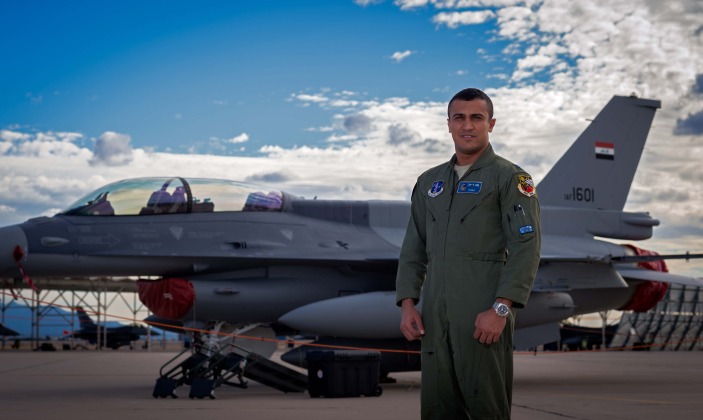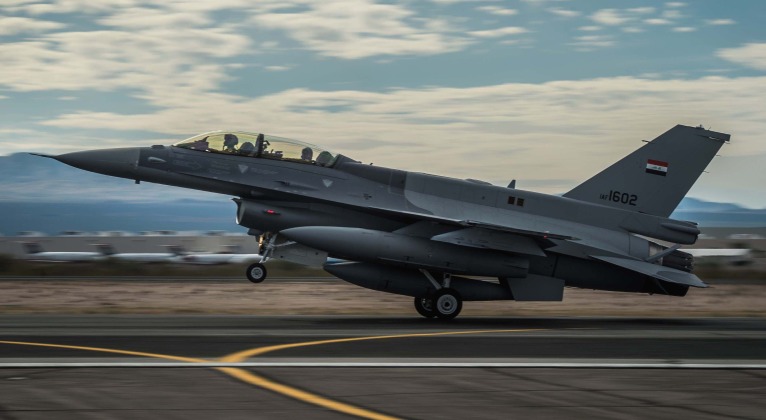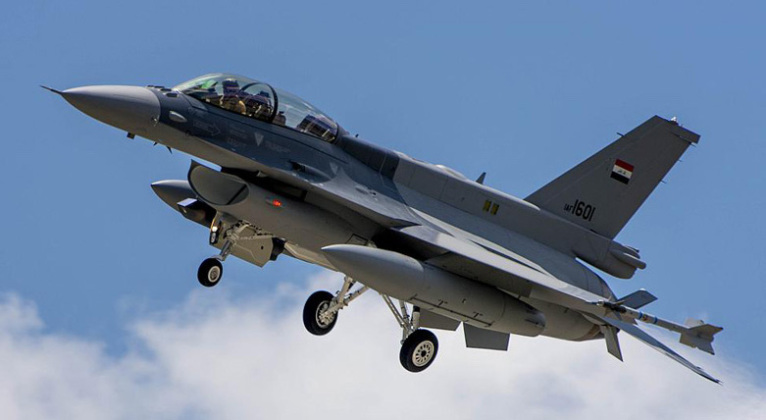Despite having a sizeable defence budget of over $10 billion, the Iraqi Air Force’s fighter fleet is considered by far the weakest for a country with military expenditures in this range and the least capable in the entire Middle Eastern region. The fleet is currently comprised two fighter classes, including 34 lightweight F-16IQ Fighting Falcon single engine aircraft, and 24 very light T-50 jets. The T-50 is a South Korean trainer jet which can be pressed into service for combat operations, and although designed to prioritise a low cost it has proven effective in a basic ground attack role against jihadist militant forces. The Lockheed Martin F-16IQ, however, has left much to be desired both in terms of combat capabilities and when assessing its combat readiness rates. It is no exaggeration to say that the aircraft represents the least capable F-16 variant in service anywhere in the world - with the possible exceptions of those in Egyptian service and the small F-16A fleet in the Venezuelan Air Force. The latte have been unable to receive upgrades from the U.S. due to the state of political relations and are around 40 years old. F-16IQ fighters were delivered to Iraq between 2014 and 2017, and American political pressure is thought to have played a very significant role in influencing the post-occupation government in Baghdad to purchase the jets despite their lagging capabilities.

Iraqi Pilot with F-16IQ Fighter
The F-16IQ was developed as a heavily downgraded variant of the F-16C Fighting Falcon specifically for the Iraqi Air Force, and is the least capable fourth generation fighter in air to air combat in the Middle East today. The fighters are the only modern F-16 variants which are not equipped with AIM-120 air to air missiles, instead relying on the antiquated Cold War era AIM-7 Sparrow for medium range engagements and AIM-9L/M missiles for close range combat. The decision to limit the aircraft to such a loadout is thought to have been influenced by Israeli concerns regarding the deployment of any jets with viable aerial warfare capabilities by the country - meaning Iraq was only provided with the minimum capability sufficient to engage ground targets. The AIM-7 lacks active radar guidance, a long range or viable electronic warfare countermeasures needed to pose a threat to any remotely modern fighter jets - be the Israeli F-16I fighters or Saudi F-15SA jets - meaning the F-16IQ fleet has little utility in an air defence role. Furthermore, the AIM-9L/M lacks high off bore-sight targeting capabilities and are much less manoeuvrable than the AIM-9X series of missiles, or the Russian R-73 missiles used by jets from neighbouring Syria and Iran, meaning even in very close range engagements the F-16IQ will have little chance of threatening enemy fighters. Avionics and electronic warfare systems are also far less capable than those of standard F-16 variants.

F-16IQ Single Engine Fighter
Compounding problems with the F-16IQ’s performance, the aircraft have suffered from a high rate of crashes and near crashes and very poor maintenance. Although these factors can be largely attributed to problems in the Iraqi Military itself, the fact that the F-16IQ’s maintenance requirements are so much higher than the Korean T-50 jets makes the issue far more serious. Shortages of spare parts has forced the service to cannibalise jets to keep at least a portion of the fleet operational, with airworthiness rates having declined sharply since the last aircraft were delivered in 2017. Issues with availability rates are thought to have been a key reason why the fighters were removed from the country’s order of battle in the Spring of 2020 - leaving the T-50 as the country’s only fighter. Further issues have ranged from corruption and a lack of effective forward planning which are thought to have impeded efforts to ensure a supply of spare parts, as well as issues with training and a shortage of fully trained air crews. Ultimately while Iraqi officials have expressed a willingness to invest in much higher end aerial warfare capabilities, including Su-57 heavyweight fifth generation fighter jets from Russia and S-400 air defence systems, reform of the Air Force will be needed to make full use of theses systems. The fact that Iraq’s Russian Su-25 ground attack jets and South Korean T-50 fighters have had much better performance records and combat readiness rates than the F-16s, however, indicates that issues with the Falcon fleet could be largely due to the state of relations with the United States - meaning the service may well fare better if transitioning to a greater reliance on Russian, Korean or other non-Western aircraft.

https://militarywatchmagazine.com/a...e-fighters-do-little-for-the-countrys-defence

Iraqi Pilot with F-16IQ Fighter
The F-16IQ was developed as a heavily downgraded variant of the F-16C Fighting Falcon specifically for the Iraqi Air Force, and is the least capable fourth generation fighter in air to air combat in the Middle East today. The fighters are the only modern F-16 variants which are not equipped with AIM-120 air to air missiles, instead relying on the antiquated Cold War era AIM-7 Sparrow for medium range engagements and AIM-9L/M missiles for close range combat. The decision to limit the aircraft to such a loadout is thought to have been influenced by Israeli concerns regarding the deployment of any jets with viable aerial warfare capabilities by the country - meaning Iraq was only provided with the minimum capability sufficient to engage ground targets. The AIM-7 lacks active radar guidance, a long range or viable electronic warfare countermeasures needed to pose a threat to any remotely modern fighter jets - be the Israeli F-16I fighters or Saudi F-15SA jets - meaning the F-16IQ fleet has little utility in an air defence role. Furthermore, the AIM-9L/M lacks high off bore-sight targeting capabilities and are much less manoeuvrable than the AIM-9X series of missiles, or the Russian R-73 missiles used by jets from neighbouring Syria and Iran, meaning even in very close range engagements the F-16IQ will have little chance of threatening enemy fighters. Avionics and electronic warfare systems are also far less capable than those of standard F-16 variants.

F-16IQ Single Engine Fighter
Compounding problems with the F-16IQ’s performance, the aircraft have suffered from a high rate of crashes and near crashes and very poor maintenance. Although these factors can be largely attributed to problems in the Iraqi Military itself, the fact that the F-16IQ’s maintenance requirements are so much higher than the Korean T-50 jets makes the issue far more serious. Shortages of spare parts has forced the service to cannibalise jets to keep at least a portion of the fleet operational, with airworthiness rates having declined sharply since the last aircraft were delivered in 2017. Issues with availability rates are thought to have been a key reason why the fighters were removed from the country’s order of battle in the Spring of 2020 - leaving the T-50 as the country’s only fighter. Further issues have ranged from corruption and a lack of effective forward planning which are thought to have impeded efforts to ensure a supply of spare parts, as well as issues with training and a shortage of fully trained air crews. Ultimately while Iraqi officials have expressed a willingness to invest in much higher end aerial warfare capabilities, including Su-57 heavyweight fifth generation fighter jets from Russia and S-400 air defence systems, reform of the Air Force will be needed to make full use of theses systems. The fact that Iraq’s Russian Su-25 ground attack jets and South Korean T-50 fighters have had much better performance records and combat readiness rates than the F-16s, however, indicates that issues with the Falcon fleet could be largely due to the state of relations with the United States - meaning the service may well fare better if transitioning to a greater reliance on Russian, Korean or other non-Western aircraft.

https://militarywatchmagazine.com/a...e-fighters-do-little-for-the-countrys-defence




